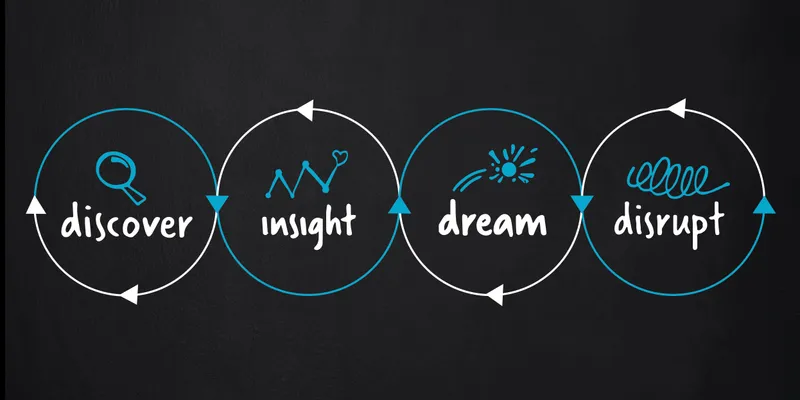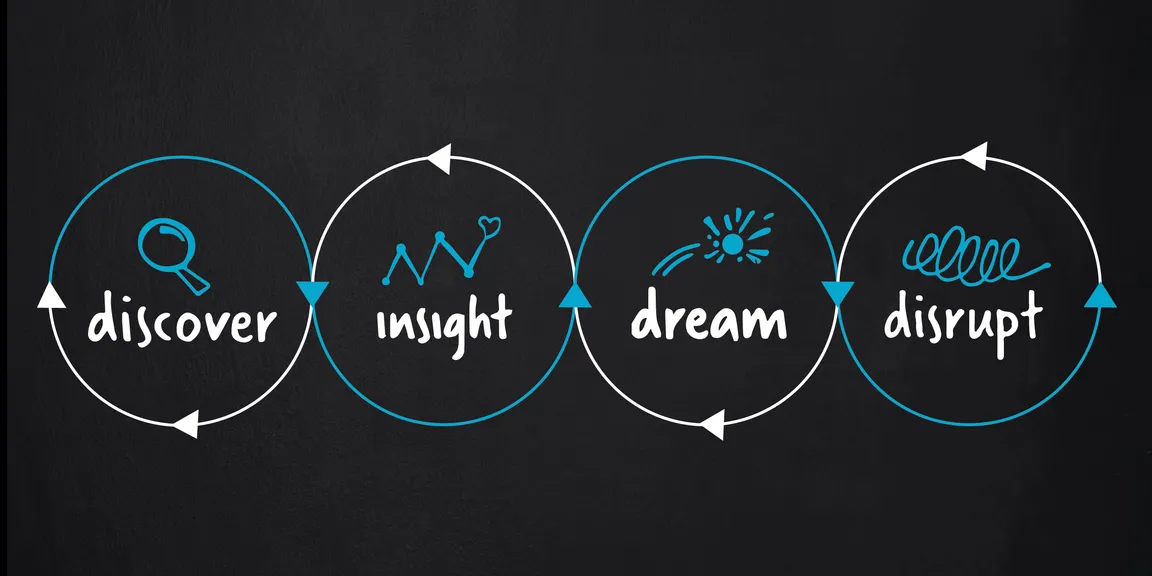

Design Thinking- The Vision For Building Products In India
It’s critical for leadership teams to harness the power of design thinking to create unique experiences for customers, which are awesome, by design.
Design thinking is a structured, human-centred approach to innovation and strategy. The key tenet of design thinking is that all design starts with and is built around solving a problem. The purpose of using design thinking is mainly to understand your users better than they know themselves, identify the right problem to solve and create solutions or innovations that surpass their expectations. Design thinking provides a structure that allows much room for individual as well as collaborative creativity and problem solving.

Organisations today need a tactical shift in the way they approach challenges and pursue innovation that will set them apart from the rat race. Innovation today is increasingly dependent on creating products or services that not just meet but beat customer expectations by delivering awesome customer experiences. Enter Design Thinking, it allows companies to determine the right problem to solve and how to solve for it; it all begins with understanding the ecosystem in which your product, solution or service operates and how it affects your customers. There is ample proof to show that it has led to new business lines being created, innovation and even disruptions in markets.
Companies like Intuit, SAP, 3M, Airbnb, P&G and GE give credit to design thinking having changed the way they do business.
In our experience, many teams and organisations are deploying a tactical workaround – that of hiring designers. Merely hiring designers isn’t enough, it’s critical for leadership teams to harness the power of design thinking to create unique experiences for customers, which are awesome, by design. What comes to mind when you think of Innovation? Ever so often, it means it’s a flashback to one of three ways we experience the pursuit of innovation across organizations:
1. The Eureka moment
2. Start thinking out of the box
3. BOHICA: Bend Over Here It Comes Again
Not surprising that companies (of every shape, size and origin) are struggling with innovation. Good work is happening, the right interventions are being made but these interventions are happening in silos. One is left with the feeling that “some secret sauce is missing”. Is there a secret sauce? And is it missing?
Design thinking is the answer. It’s missing for sure. But it isn’t missing as an ingredient – it’s missing as a mind set within teams and across organizations.
So, what is Design Thinking (DT)? Design thinking or Human Centred Design is a process for solving problems. It’s a perfect blend of divergent and convergent thinking allowing for a wide exploration of possibilities vs. being fixated on a single solution
We approach Design Thinking as a “disciplined pursuit of disruption”. The 3 key words here:
• Disciplined: It’s disciplined, because innovation isn’t about happy accidents and good fortune (serendipitous innovation). We believe in “engineering serendipity” to get to the future we want to create (note: we don’t say get future ready, which is an ever-shifting frame of reference)
• Pursuit: it’s a relentless pursuit with rigour. To fully harness the potential of DT, you have to anchor it within the DNA of the team / organisation. For organizations to realize the full potential of their innovation capabilities, they need to look at it holistically, from up skilling talent, empowering them with the right processes, values and decision making, allowing them to push the boundaries of what’s possible
• Disruption: This is an oft quoted (largely misquoted) and we make an effort to make that distinction. Disruption is doing new things that makes old / existing things obsolete. Innovation on the other hand is just doing new things.
The design thinking process is a 4 step journey: Discovery —> Insight —> Dream —> Disrupt
Discover: Define the right problem to be solved from the point of view of the users. Puts yourself in the users’ shoes through user research and bring about clarity and focus as to what needs to be done.
Insight: Empathy is at the heart of good design. It allows us to put aside our biases and understand how other people experience things. This requires going out there and connecting with your end users and every stakeholder involved. Building deep empathy leads to non-obvious insights. These insights shed light on needs and should motivate you to do something; insights that inspire innovation.
Dream: Allow wild ideas to come forth and hold back on judgement. Unrestrained, ideas flow freely and allow yourself to go broad and be creative with them. Combine ideas to build on them and narrow down to top ideas.
Disrupt: Rapidly prototype and test in order to increase your chances of success. Identify key assumptions surrounding the idea and develop a rough, working prototype to explain your ideas and start to test them with end users. It is an iterative process of incorporating feedback and solidifying the solution while still keeping the user at the heart of your solution.
To design great products we need to adopt a unique mindset and a design thinking mindset is critical. A mindset that is open to listening to customers, designing with them and not for them and being open to a feedback culture at every stage of building the solution.





